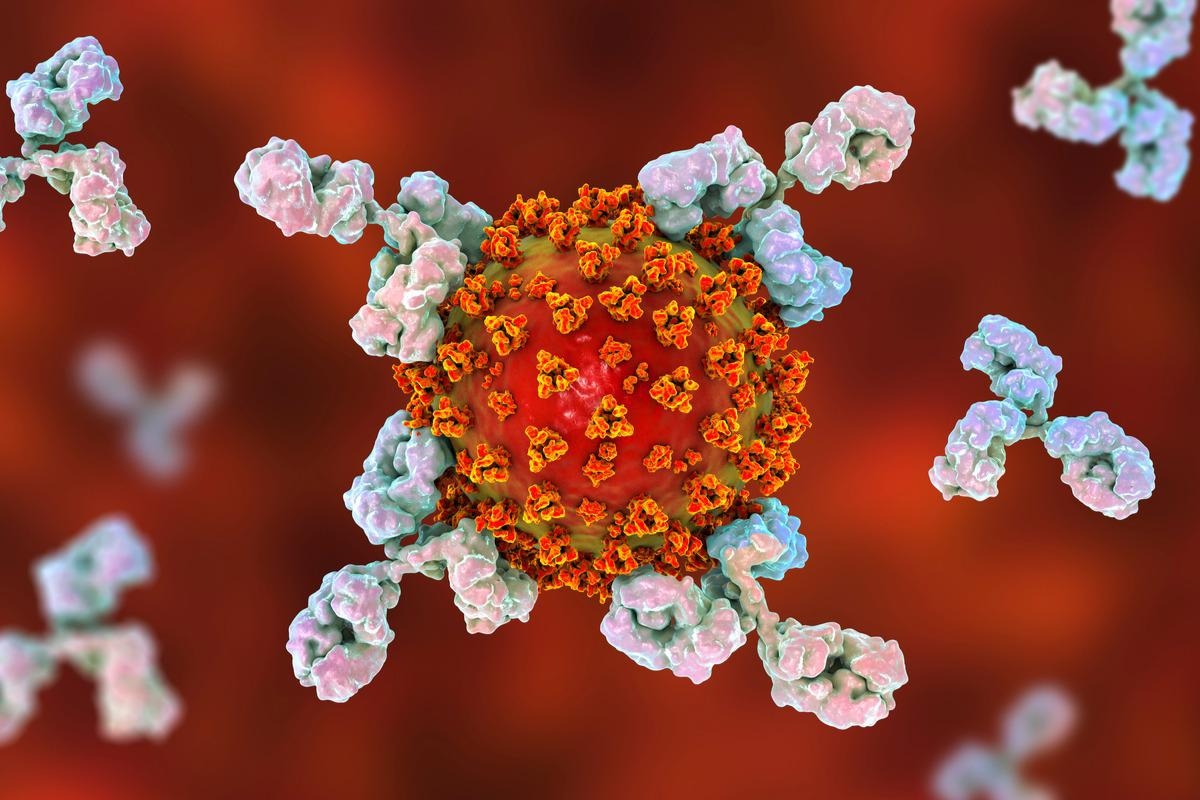Detection and testing of Severe acute respiratory syndrome coronavirus 2 (SARS-CoV-2) antibodies could help assess antibody response after infection and vaccination in sero-surveillance studies and to distinguish between vaccine-induced and natural SARS-CoV-2 infection-induced seropositivity.
 Study: Antibody response to SARS-CoV-2 for more than one year − kinetics and persistence of detection are predominantly determined by avidity progression and test design. Image Credit: Kateryna Kon/Shutterstock
Study: Antibody response to SARS-CoV-2 for more than one year − kinetics and persistence of detection are predominantly determined by avidity progression and test design. Image Credit: Kateryna Kon/Shutterstock
However, the interpretation of SARS-CoV-2 antibody responses remains challenging as the results of SARS-CoV-2 antibody assays vary widely and there is considerable heterogeneity among SARS-CoV-2-infected individuals. Moreover, it is difficult to predict the time duration for which an antibody response will persist in a SARS-CoV-2-infected individual.
About the study
In a review published in the Journal of Clinical Virology, researchers characterized the course and duration of antibody responses over more than one year in symptomatic COVID-19 patients across a range of different severity levels. They used 12 anti-SARS-CoV-2 antibody assays in this study. These assays encompassed different test designs and antibody (Ab) type detections (total-Ab (TAb), IgG, IgA, IgM), and SARS-CoV-2 target antigens (nucleocapsid protein (N), receptor-binding domain (RBD), spike protein (S)). In addition, the researchers detected neutralizing antibodies, evaluated test sensitivities, antibody titers, and determined antibody avidity.
The researchers analyzed antibody responses in samples of 828 patients over 5-430 days post symptom onset (pso). The donors tested positive for nucleic acid amplification test (NAT) and were symptomatic for coronavirus disease 2019 (COVID-19), and their samples were collected pso and examined for up to 14 months.
Findings
For this study, the researchers examined two groups to evaluate the impact of severity of COVID-19 symptoms - the mild COVID-19 group (scores 1-3) and the severe COVID-19 group (scores 4-7), which needed oxygen or ventilation support. Owing to the heterogeneity of the mild COVID-19 group, it showed a wide range of antibody reactivities partly overlapping with the severe COVID-19 group, consistent with the results of past research, and a corresponding variability between different tests. The results demonstrated distinctive test-specific patterns over time, allowing the classification of differences between these tests.
The duration and sensitivity of antibody detection depended on test design and progression to high avidity. The sandwich test design of TAb assays, and RBD/S-based assays, resulted in higher sensitivity over time based on increasing avidity for S/RBD. These tests thus showed the highest and long-lasting sensitivity, with stable antibody titers throughout the 14-months observation period and no predictable detection endpoint. Up to 300 days pso, the sensitivities of IgG-S/RBD and IgA-S tests were stable before dropping by 10-16% at 430 days pso, while during this time, the antibody titers decreased moderately.
On the other hand, N-based assays were less sensitive than the corresponding S-based assays. Accordingly, they showed an early decline in antibody titers starting from day 120 pso. Due to its sandwich design, the sensitivity of TAb-N decreased only slightly at 430 days pso. The declining antibody titers suggested further decrease in its sensitivity. The decline in sensitivity was much faster after 120 days pso for IgG-N that eventually became insignificant after 240-300 days pso.
The sensitivity of IgM- RBD assays suggested that IgM was not suitable for predicting the accurate timing of infection. Its sensitivity was confined to 30-60 days pso, followed by a rapid decline which was not consistent as some individuals showed IgM persistently over time.
At 430 days pso, NAb targeting RBD showed consistently high or slightly increased base sensitivity of 90-94%, indicating a sustained duration of neutralization than shown in past research studies. Most patients achieved high antibody avidity of 76% after 12 months pso and 94% after 14 months pso. The avidity against immunogenic S and RBD slowly increased to more than 60% at 120 days pso, then stabilized before further increasing at 430 days pso. In contrast, avidity against N was low, with only 20-26% of patients showing high avidity.
To summarize, at 30-60 days pso, sensitivities for IgG-S, TAb-N, TAb-S/RBD, IgG-N, IgA-S, IgM-RBD, and NAb was 89.7%, 99.5%, 96.6%, 94.3%, 80.9%, 76.9% and 92.8%, respectively. During follow-up 430 days pso, results showed that TAb-S/RBD increased slightly while TAb-N decreased slightly. Also, IgG-S and IgA-S decreased moderately, and NAb remained positive before slightly decreasing at 300 days pso. IgG-N decreased significantly from day 120 pso and IgM-RBD dropped after 30-60 days pso. Test specificities were ≥99%, except for IgA for which the test sensitivity was 96%. Steady high antibody avidity was observed against S and RBD in 94.3% of patients after 430 days pso. Based on the antibody-binding efficiency of the test design, these findings correlated with persistent antibody detection.
Conclusion
The study findings indicated that antibody detection showed a distinct pattern depending on the type of antibody detected, the target antigen, the test design, antibody avidity level, and COVID-19 severity. The duration of antibody responses was primarily driven by avidity progression for S/RBD and its exploitation by the respective test design. TAb assays, based on S/RBD, showed high sensitivity and persistent antibody detection for more than 14 months pso with consistent antibody titers.